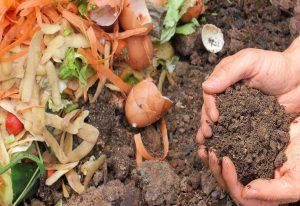Q&A
Terrain is simply the state of your inner and outer environments. Your inner environment includes your nutritional state, immune system, metabolism and your microbiomes. Your outer environment includes factors such…
Read MoreCheck out the extensive timeline of Rudolf Steiner’s life and work. Not only does it weave together his life story, it links to his books and lectures given through the…
Read MoreBuilding a compost pile is one of the easiest and most important gardening projects that everyone should undertake. Compost provides excellent nutrition for plants, builds the soil, feeds beneficial microbes, and…
Read MoreThey recycle nutrients Worms are hungry little creatures. They have the capacity to eat their own body weight in food every day! Amongst other things, their diet consists of: dead…
Read MoreThe Summer Solstice is celebrated on our around the 20th of June in the Northern Hemisphere. The Summer Solstice occurs when the axial tilt of the earth is at its…
Read MoreBy Justo Posted on June 13, 2025 Reposted from Native Tribe Info Readers, have you ever wondered about the rich tapestry of Native American Summer Solstice traditions? These celebrations, deeply rooted…
Read MoreTHE FESTIVAL OF JĀŅI: A CELEBRATION OF THE SUMMER SOLSTICE by Sean McLaughlin The Latvian Midsummer festival of Jāņi is quite complex with many prescribed rituals and activities leading up…
Read MoreSummer Solstice, A Biodynamic Perspective By Hazel Archer Ginsberg, June 21, 2025 Summer Solstice comes at the precise moment when the Sun’s power is at its peak. ‘Solstice’ (Latin: ‘solstitium’)…
Read MoreWinter Application of Biodynamic Tree Paste Originally Post by Josephine Porter Institute, January 2015 Biodynamic tree paste is applied once a year in late fall after leaf drop or in…
Read MoreAt Earth Haven Farm, we grow black raspberries. We tried red raspberries, but they did not do well alongside the black raspberries. We tried yellow raspberries, but they did not…
Read MoreArticle Repost – Originally posted by Mother Earth News | Homegrown Life | 1/13/2012 | By Farm Aid and Homegrown.org The seed catalogs are starting to roll in and with it comes the…
Read MoreBy definition, organic farming and gardening, also known as organic agriculture or ecological farming or biological farming, is an agricultural system that emphasizes the use of naturally occurring, non-synthetic inputs, such as compost manure, green manure, and bone…
Read MoreThe term “sustainable agriculture” was defined in 1977 by the USDA as an integrated system of plant and animal production practices having a site-specific application that will, over the long term. satisfy…
Read MoreWhat is No-Till Farming? No-till farming is an agricultural technique for growing crops or pasture without disturbing the soil through tillage. No-till farming decreases the amount of soil erosion tillage causes…
Read MoreCompanion planting in farming and gardening is the planting of different crops in proximity for any of a number of different reasons, including weed suppression, pest control and pollination. Companion…
Read MoreHomeopathy for plants, also known as agrohomeopathy, involves using homeopathic remedies to treat plant diseases and improve growth. This method focuses on the whole plant and its environment, aiming to…
Read MoreImportance of Pollinators on the Farm Pollinators are responsible for pollinating over 75% of the world’s flowering plants, including many food crops that humans reply on. Without pollinators, the production…
Read MoreCorn likely originated in Mexico about 10,000 years ago as a much smaller plant than it is today. But early native Americans learned how to pick specific kernels to replant,…
Read MoreAccording to the various highland cattle associations, the breed standards are basically all the same. There are separate standards for males and females. The Head Of all the representatives of…
Read MoreThere are 12 basic standard principles of permaculture design. Whatever resource you look at they are all the same. (Source: permacultureprinciples.com – Creative Commons license CC BY-NC-ND 2.5 AU) By following these…
Read More





